How to photograph a total solar eclipse with a smartphone 2024 — 8 tips from an expert
Take incredible photos of a total solar eclipse using only your smartphone. Our expert shares how to get the best results.
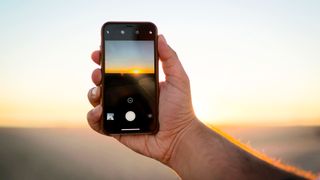
A total solar eclipse means the Sun will be completely hidden behind the moon for up to four minutes, plunging everyone below into darkness.
To get the full effect, you'll need to be within the 115-mile-wide path of totality, which is the path where the moon will block out the Sun's light completely. Outside of that, a partial eclipse will be visible. Check out our guide to the total solar eclipse for all the information and timings you need to know ahead of the next big day.
Although the last total solar eclipse graced U.S. skies as recently as April 8, 2024, the next is not due until 2044, so it's worth making the effort to see (using proper solar eclipse glasses to protect your eyes) and photograph the next annular or partial occasion. Luckily, you don't need any fancy equipment to capture images of this momentous event. This guide will show you how to get great images of a total solar eclipse using only your smartphone.
Be sure to also keep an eye out for strange solar eclipse phenomena and the different stages of the total solar eclipse.
Solar eclipse kit deals October 2024
- Amazon: Celestron solar eclipse glasses
- Walmart: Solar glasses, binoculars and filters available
- Best Buy: Solar glasses, viewers, telescopes and binoculars
- B&H Photo Video: Single and multipack eclipse glasses
Useful gear for photographing the eclipse
Need something to equip your camera and lens or telescope with? Here's three top products we recommend for photographing a solar eclipse.
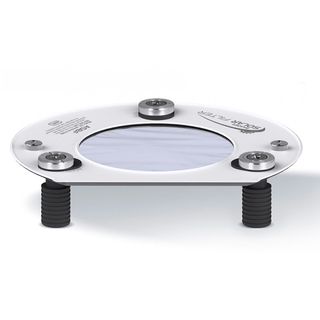
White light filter designed to clamp onto binoculars, camera lenses and monoculars, this filter is well built and provides great views of the sun.
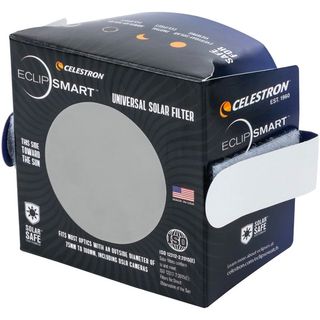
A cheap and cheerful solar filter to attach to your telescope, camera lens or spotting scope for easy solar viewing, but it's not designed to last forever.
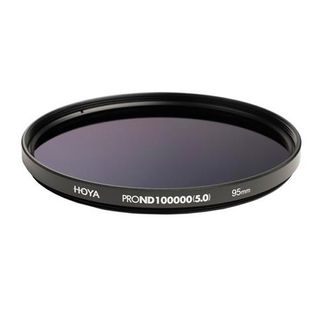
Made specifically for solar photography, this filter can screw onto the front of camera lenses and telescopes, although it doesn't claim to block any of the harmful rays.
Why smartphones are ideal for the total solar eclipse
Gone are the days when people tried to use point-and-shoot cameras — these days, it's either a smartphone or a DSLR/mirrorless camera. 'Smartphones are going to be the way most people capture this eclipse and that's fine — they will work very well,' said Alan Dyer, solar eclipse photographer and author of How to photograph the solar eclipse, in an interview with Space.com. 'Even if you just hold it up and shoot on auto exposure, you'll probably get a good shot.'
Whilst professional close-up images of the sun's corona will be out of most people's reach, since they require high-tech equipment as well as professional knowledge and experience, you'll still be able to capture some great pictures and videos with your smartphone camera, especially with a bit of forethought and planning. We've rounded up our eight top tips to set you on the path for success.
For amateur and professional photographers who are looking for a more detailed shot, we also have a dedicated guide on ‘how to photograph a solar eclipse’ with your camera, along with a guide to the best solar viewing kit to set you up for this and any future eclipses.
1. Switch off the flash before totality
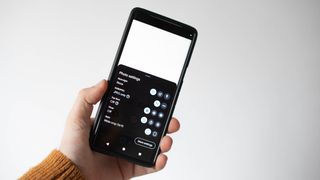
If you're inside the path of totality, there's one thing you must do to your smartphone — disable the flash before totality. Using flash won't help your photography and, worse, it will detract from the experience of totality for everyone around you. If you don't do this, expect groans and moans in your direction.
2. Don't zoom in on the eclipse
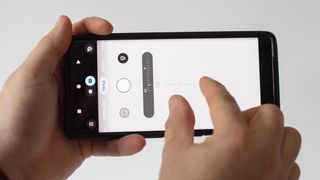
This next bit of advice doesn't apply to those with smartphones that have a separate telephoto lens that optically zooms in on far-away subjects. But for the many smartphones that don't have this, take heed.
Don't make the one classic mistake that most people make when using a smartphone to take an image of an eclipse. As the eclipsed sun appears, the temptation is to pinch the screen to zoom in as far as you can. It's so tempting, particularly if your smartphone has a so-called 'superzoom', but it rarely heralds good results. After all, as you zoom in, you lose resolution, and all you are doing is reducing the quality of your image, which will become noticeably grainy and dirty.
3. Go super wide-angle or portrait
The most impactful wide-angle images of an eclipsed sun occur close to the horizon. That wasn't possible during the April 8 total solar eclipse because totality takes place from a maximum of 68 degrees above the southeast horizon when it's first seen in Mexico, dropping to about 24 degrees above the southwest horizon as it's last seen in Canada. So, you might consider using portrait mode to fit in some foreground, though super wide-angle ought to work for many.
4. Lock focus during totality
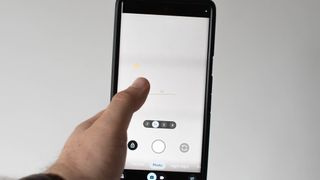
A superb image can be had during totality using just a smartphone — but only if you set it up properly. 'Use a smartphone on auto exposure, and it will probably work, but whether it's in focus depends on what's in the foreground,' said Dyer. 'It may hunt for focus.'
The answer is to use the focus lock on your smartphone. Exactly how you do that will depend on what smartphone you have and what app you use. For example, on an iPhone's native camera app, you touch what you want to focus on by pressing on the object on your smartphone's screen for a second or so. This will lock the focus so you can concentrate only on composition. With plunging light levels just before totality, exactly when and how you do that is key. Once just a slither of the sun is visible in your eclipse glasses and it begins to get suitably dark around you, focus your camera on something in the middle distance — perhaps a tree, building or the bridge on a cruise ship. You can then move the brightness shutter up and down to control the shutter speed — you'll probably want to take it down a notch.
5. Use burst mode during totality
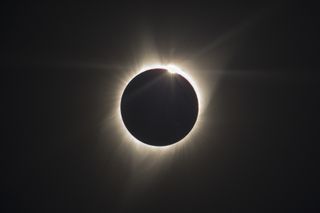
With the last few beads around the moon, you're ready to catch one of the highlights of the eclipse — the diamond ring. It's the final bead of sunlight before it goes completely dark, and the sun's mighty corona appears. This happens in a split second, and you'll have no hope of catching it manually, so consider using burst mode to capture the magical moment.
6. Shoot totality in RAW
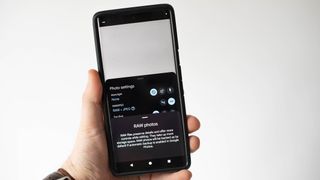
Totality is dark. If you experienced totality during the last total solar eclipse in North America — on April 8, 2024 — you'll recall the moon was closer than in 2017, the path of totality as wider and significantly darker. That means you need to think like an astrophotographer (check out our astrophotography for beginners guide) and shoot in RAW image format. RAW images retain the original sensor data and skip the built-in processing your smartphone automatically applies to JPEGs.
The way to shoot in RAW is to download a third-party app such as Halide, Yamera or Camera+ 2 and toggle on the RAW mode. Some phones, like the Google Pixel range, will let you shoot RAW without needing any third-party apps.
Shoot as usual; after the eclipse, you can edit and touch up the image in one of the desktop best photo editing apps for astrophotography, or smartphone apps like Darkroom, Afterlight, or VSCO. The finished result will have much more dynamic range, color and detail than any JPEG your smartphone's built-in camera app produces.
However, since RAW images take up more space, it's wise to make sure you have plenty of room on your smartphone, perhaps clearing out unwanted photos and apps before eclipse day. Need more space? Back them up on one of the best external hard drives.
7. Don't shoot a handheld video
With your primary focus being on witnessing the main event for yourself, it may be tempting to just set your phone to video mode. This will come as an instinct for many people watching the eclipse, but most will do it wrong. 'A lot of people will take a movie,' said Dyer. 'But they'll be waving it about and bouncing around, and all they'll get is a movie that will make anyone watching it feel sick.'
8. Shoot video using a tripod
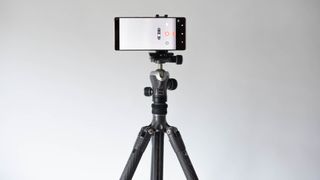
Shooting video can still be a great way of documenting the eclipse, just try thinking less along the lines of filming the eclipse itself and more along the lines of filming you, your friends and your family experiencing the moment of totality together. Not only will you capture the eclipse in the background, but you'll also get a great piece of film that you can share with others and watch back later as a souvenir of that magical moment.
To achieve this, you can try leaning your smartphone against something nearby, or you can invest in a compact tripod with a universal smartphone holder to take with you on the day of the eclipse. 'Put it in wide-angle mode, start the movie going a couple of minutes before totality and just let it run,' said Dyer. 'As a bonus, you'll capture audio — the cheering and you shouting 'oh my God!' — a big part of the experience and a great souvenir you can use to relive the eclipse years later.'
Upcoming total solar eclipses
Our solar eclipse guide details at length when and where the next solar eclipses will be, but below is a summary to whet your appetite.
12 August 2026
Europe is next treated to a total eclipse in 2026, which will be visible from Greenland, Iceland and Spain. Weather permitting, several large cities will see totality, including Reykjavik, Bilbao, Zaragoza, and Palma. Most of western Europe will experience a partial eclipse.
2 August 2027
The path of totality for this 2027 eclipse travels across North Africa and the Middle East before terminating over the Indian Ocean. Egypt will see the longest period of totality, a huge 6 minutes 22 seconds, near the city of Luxor — the second-longest solar eclipse of the century. Given the climate, time of day, and exceptional length of totality, this is likely to be the most favorable viewing position for any solar eclipse in this decade.
22 July 2028
The final total solar eclipse of the decade will happen in 2028, when Australia and New Zealand will witness an eclipse with a maximum totality of over five minutes. This eclipse will be notable for passing over Sydney.
Join our Space Forums to keep talking space on the latest missions, night sky and more! And if you have a news tip, correction or comment, let us know at: community@space.com.
Get the Space.com Newsletter
Breaking space news, the latest updates on rocket launches, skywatching events and more!

Jamie is an experienced science, technology and travel journalist and stargazer who writes about exploring the night sky, solar and lunar eclipses, moon-gazing, astro-travel, astronomy and space exploration. He is the editor of WhenIsTheNextEclipse.com and author of A Stargazing Program For Beginners, and is a senior contributor at Forbes. His special skill is turning tech-babble into plain English.
- Jase Parnell-BrookesManaging Editor, e-commerce